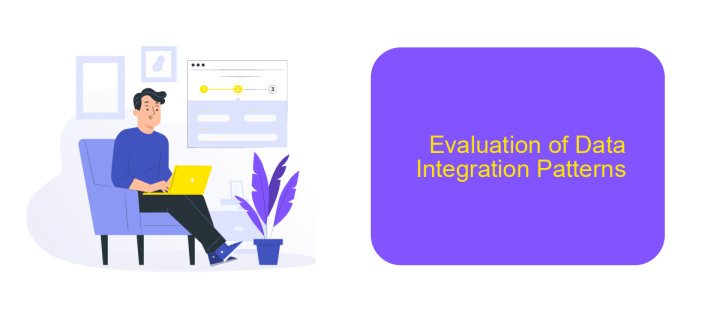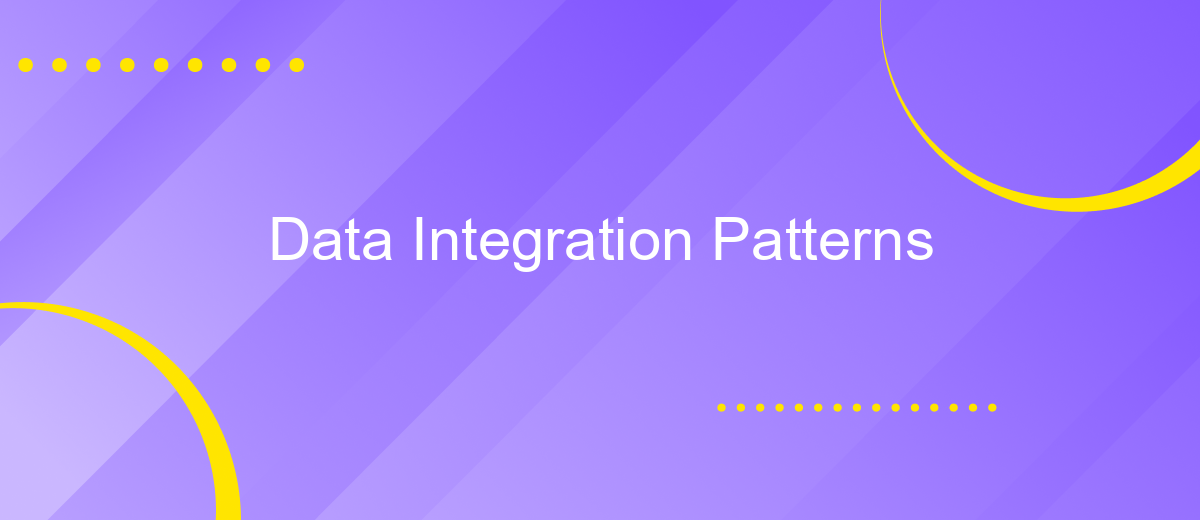Data Integration Patterns
Data integration patterns are essential strategies for combining data from various sources into a unified view, enabling seamless data analysis and decision-making. These patterns address challenges such as data consistency, latency, and scalability, providing a framework for efficient data management. Understanding these patterns is crucial for organizations looking to leverage their data assets effectively and gain competitive advantages in today's data-driven world.
Introduction
Data integration is a crucial aspect of modern business operations, enabling seamless communication between disparate systems and applications. With the increasing complexity of IT environments, organizations must adopt effective integration patterns to ensure data consistency, accuracy, and accessibility. These patterns facilitate the smooth exchange of information, driving operational efficiency and informed decision-making.
- Batch Data Integration: Involves periodic data transfers between systems, ideal for large volumes of data.
- Real-Time Data Integration: Ensures immediate data exchange, crucial for time-sensitive operations.
- API-Driven Integration: Utilizes APIs to connect and synchronize data across different platforms.
- ETL (Extract, Transform, Load): A process that extracts data from sources, transforms it, and loads it into a destination system.
- Data Virtualization: Allows real-time data access without physical data movement, enhancing flexibility.
One of the services that streamline the setup of these integration patterns is ApiX-Drive. It offers a user-friendly interface and robust tools to connect various applications and automate data flows. By leveraging such services, businesses can reduce the complexity of data integration, ensuring that their systems work harmoniously and data is always up-to-date.
Data Integration Challenges

Data integration presents several challenges that can complicate the seamless merging of information from diverse sources. One of the primary issues is data inconsistency, where different systems may store data in various formats, leading to discrepancies when combined. Additionally, ensuring data quality is critical; poor data quality can result in inaccurate analytics and decision-making. Data security is another significant concern, as integrating data from multiple sources increases the risk of breaches and unauthorized access.
Another challenge is the complexity of integrating data from a wide array of systems, each with its own protocols and standards. This often requires specialized tools and expertise to manage effectively. Solutions like ApiX-Drive can simplify this process by providing a user-friendly platform for automating data integration tasks. ApiX-Drive supports numerous applications and services, enabling seamless data flow without the need for extensive coding knowledge. By leveraging such tools, organizations can mitigate many of the common challenges associated with data integration, ensuring a more efficient and secure data management process.
Data Integration Patterns

Data integration patterns are essential for ensuring seamless data flow between diverse systems and applications. These patterns help organizations manage, transform, and consolidate data from multiple sources, enhancing data consistency and accessibility.
- ETL (Extract, Transform, Load): This pattern involves extracting data from source systems, transforming it to fit operational needs, and loading it into a destination system.
- Data Replication: This pattern involves copying data from one database to another, ensuring data consistency and availability across systems.
- Data Virtualization: This approach allows users to access and manipulate data without requiring technical details about the data's storage location.
- API Integration: This pattern uses APIs to connect different systems, enabling real-time data exchange and synchronization.
Using tools like ApiX-Drive can simplify the process of integrating various applications and services. ApiX-Drive offers a user-friendly platform for setting up and managing integrations, allowing businesses to automate data workflows and reduce manual intervention. This ensures that data remains up-to-date and consistent across all connected systems.
Evaluation of Data Integration Patterns

Evaluating data integration patterns is crucial for ensuring seamless data flow across various systems. Different patterns offer unique advantages and challenges, making it essential to understand their specific use cases and limitations. By carefully assessing each pattern, organizations can select the most suitable approach for their data integration needs.
One of the key factors to consider is the complexity of the integration. Some patterns may require extensive configuration and maintenance, while others offer simplicity and ease of use. Additionally, the scalability and performance of the integration pattern should be evaluated, especially for organizations dealing with large volumes of data.
- Point-to-Point Integration: Simple but can become complex with an increasing number of connections.
- Hub-and-Spoke Integration: Centralized control but may introduce a single point of failure.
- API-Based Integration: Flexible and scalable, ideal for modern applications.
- Data Virtualization: Provides real-time access but may impact performance.
Utilizing services like ApiX-Drive can significantly simplify the integration process. ApiX-Drive offers a user-friendly interface and supports various integration patterns, making it easier to connect disparate systems without extensive technical knowledge. This can be particularly beneficial for organizations looking to streamline their data workflows efficiently.


Conclusion
In conclusion, data integration patterns are crucial for organizations seeking to unify disparate data sources and streamline their operations. By leveraging these patterns, businesses can ensure seamless data flow, improve data quality, and enable real-time analytics. Each pattern offers unique benefits and caters to specific integration needs, making it essential to choose the right approach based on the organization's requirements.
Moreover, tools like ApiX-Drive simplify the process of setting up and managing data integrations. ApiX-Drive offers a user-friendly interface and robust capabilities, allowing businesses to connect various applications and automate workflows without extensive technical expertise. By utilizing such services, organizations can enhance their data integration strategies, reduce manual efforts, and focus on deriving actionable insights from their integrated data.
FAQ
What are data integration patterns?
Why is data integration important?
What are some common data integration patterns?
How can I automate data integration processes?
What challenges might I face when implementing data integration?
Routine tasks take a lot of time from employees? Do they burn out, do not have enough working day for the main duties and important things? Do you understand that the only way out of this situation in modern realities is automation? Try Apix-Drive for free and make sure that the online connector in 5 minutes of setting up integration will remove a significant part of the routine from your life and free up time for you and your employees.

